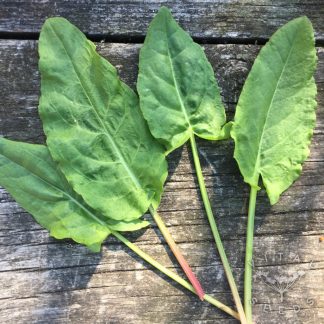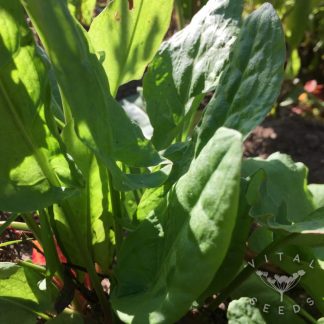Sorrel Seeds
How to grow Sorrel
How to grow Sorrel
Seed Sowing
Sorrel can be sown at any time between February – July but for best results sown outdoors in the spring in shallow drills 30cm apart, thinning to final spacing. Allow up to 6 weeks for germination.
Seeds can also be started in pots or modules, planted out once the seedlings are established. As it is a perennial, the plants will die back in the autumn but regrow from the roots in spring. If growing for flavour it is advised to treat the plant as an annual and resow each year.
Transplanting
Prepare the area by removing weeds and adding organic matter before planting. Transplant your seedlings into their final growing position in rows 30 cm apart and plants 20 cm apart from May onwards.
Sorrel are related to rhubarb and grow as such. They can be grown in containers if you’d rather prevent the plants from spreading too wide.
Plant Care
Bolting can be a problem in the height of summer. Long day length and hot, dry weather will push sorrel to produce a flower stem. If this is the case simply cut the stem to encourage regrowth. Ensure the ground has enough organic matter to retain moisture and keep it well watered.
Challenges
Slugs and snails really like young plants. If these are a problem in your garden, sow indoors and plant out when larger. Encourage slug predators like ground beetles, lizards, slow worms, and, if you’re lucky enough, hedgehogs into your garden by creating wildlife habitat.
Harvest
Pinch off young leaves by hand or with scissors once plants become established and leaves are plentiful.
Culinary Ideas
Sorrel’s tart, lemony leaves are a rich source of nutrients like vitamin C, manganese and iron. Traditional recipes call for sorrel soup to be enjoyed in the spring time but its wonderful flavour also brings a punchy edge to a salad mix or added to creamy and delicately flavoured foods like creme fraiche, pulses, eggs or chicken.
Seed Saving
Let them flower and go to seed. Once they start to turn brown, dry and brittle you can harvest. They can fall off quite easily, so get them before they drop. Snip the seed heads off or rub the seeds into a container. Leave them to dry out and keep them in a cool, dark place.
Growing calendar
| Month | J | F | M | A | M | J | J | A | S | O | N | D | ||||||||||||
|---|---|---|---|---|---|---|---|---|---|---|---|---|---|---|---|---|---|---|---|---|---|---|---|---|
| Sow | ||||||||||||||||||||||||
| Plant | ||||||||||||||||||||||||
| Harvest | ||||||||||||||||||||||||
Showing the single result
-


Sorrel – French (Organic)
£2.20 Add to basketSorrel – French (Organic)
A zesty perennial herb with bright green shield-shaped leaves and citrusy aroma. French sorrel grows in clumps of 15cm high by 20cm wide. It is easy to grow and easy to pick. Developed in Italy and France in the Middle Ages, the tangy and slightly tart taste packs a punch. Use as a herb, salad leaf or leafy green. Perfect for adding an edge to rich and heavy meals.
(Approximate seed count – 350) £2.20
£2.20
Showing the single result


